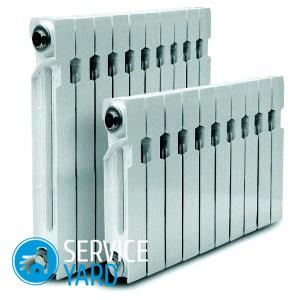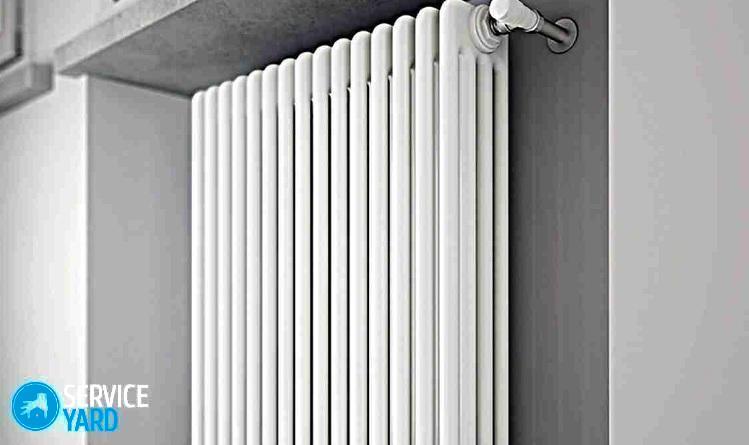How to install heating batteries in an apartment?

Proper installation of heating devices is a great way to ensure the optimal indoor climate in the cold season. Today we will talk about how to properly install heating batteries in an apartment. This work cannot be called too complicated. It is only important to strictly observe all the rules and nuances of installation.
to contents ↑How to choose a radiator?
The range of heating appliances on the market, frankly, is impressive. A variety of batteries are presented - from budget to exclusive options. However, the principle “the more expensive the better” does not always work. The secret to making the right choice is to be able to find an option that is optimal for you.
Here are the factors to consider when buying:
- Type of housing (apartment in a multi-storey building, private house).
- Wiring the heating system.
- The installation method of the heater.
- Temperature condition in the heating system.
- Material used for the manufacture of pipes.
- The location of the apartment in the house.
- The need for regulatory instruments and fittings.
Depending on the material of manufacture, there are such options.
Cast iron
Today's cast iron batteries do not resemble the heavyweight bulky “accordions” of the Soviet Union. These are flat panels of a completely modern design. Cast iron retains heat for a long time and has good heat dissipation. Cast iron batteries last long enough: from 20 to 50 years.
Important! The main minus of cast iron products is a large mass. The weight of one section is 8 kg. For this reason, they can not be installed in rooms with wooden or plasterboard walls. In addition, due to the roughness of cast iron, radiators are quite difficult to clean from contamination.
Aluminum
By design, they are not much different from cast iron products. The main difference is the weight of the sections (one section weighs 1 kg). Like cast iron, aluminum has good heat dissipation. You can fix such batteries on the walls of any material.
Important! The main disadvantage is the susceptibility to corrosion from a chemically aggressive coolant and sensitivity to water pressure surges.
Bimetallic
Bimetal construction is a kind of compromise between cast iron and aluminum. They resemble aluminum in appearance, but are chemically neutral with respect to aggressive aqueous media and insensitive to pressure drops in the system. Very easy to install, have good heat dissipation, affordable.
Steel
Steel radiators have a modern design and excellent thermal properties. There are practically no shortcomings in the steel structure, except that they do not tolerate water hammer well.
to contents ↑How to install a heating radiator with your own hands - preliminary steps
Before starting installation work, it is necessary to coordinate the installation scheme with specialists. This will allow you to properly install and effectively heat the apartment or house. Preliminary work is carried out in the following order:
- Block the water in the apartment and near the installation site.
- Drain the area where the radiator needs to be replaced.
- Blow out the pipes, drain the remaining water.
- Install a new battery in accordance with the instructions and recommendations of the manufacturer.
- After the heater is installed, test it for leaks.
Battery mounting rules, in accordance with SNiP
Correctly install heating batteries in the apartment in accordance with such requirements:
- It is necessary that the centers of the window and the radiator coincide. The error should not exceed 20 mm.
- The width of the battery should be 0.5-0.7 of the width of the window sill.
- The height of the battery above the final floor should not exceed 120 mm.
- The distance from the top of the battery to the windowsill should not exceed 20 mm.
- The interval between the battery and the wall is 20 to 50 mm. This distance can be shortened if the wall is treated with heat-reflecting material.
Aluminum construction:
- Preassemble the device.
- Screw in the plug, install thermostatic and shutoff valves.
- Install the Mayevsky crane.
- Mark the places to fix the device on the wall.
- If necessary, treat the wall with heat-reflecting material.
- Fix the brackets to the wall.
- Hang the battery on the brackets by placing hooks between the sections.
- Connect the radiator to an autonomous or individual heating system.
Important! On sale there are 2 types of radiators for different types of buildings: designed for a pressure of 6 atmospheres (for autonomous heating systems) and appliances designed for a pressure of up to 16 atmospheres (used for installation in high-rise buildings).
Features of installation of cast iron and bimetallic structures
The installation procedure is almost the same as aluminum batteries:
- It is recommended to install devices under a slight slope to avoid accumulation of air in the radiator (this leads to a decrease in heat transfer).
- Before mounting, unscrew the device, check the nipples, then assemble it together.
- In houses with wooden walls, brackets alone cannot be used. The battery is mounted on floor stands, and the brackets play the role of additional support.
Stock footage
In this article, we examined all the nuances regarding how to properly install heating batteries in an apartment. We hope you managed to cope with this task efficiently, and in winter there will be no problems with heat.
- How to choose a vacuum cleaner taking into account the characteristics of the house and coatings?
- What to look for when choosing a water delivery
- How to quickly create comfort at home - tips for housewives
- How to choose the perfect TV - useful tips
- What to look for when choosing blinds
- What should be running shoes?
- What useful things can you buy in a hardware store
- Iphone 11 pro max review
- Than iPhone is better than Android smartphones




